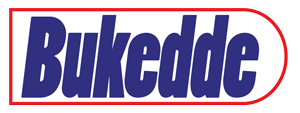Protecting the critical boss at the helm of any organisation
Protecting such a leader is not about pampering or shielding them from reality. It is about creating the conditions in which they can make sound decisions, guide the organisation through storms, and remain healthy — physically, mentally, and reputationally.
Protecting the critical boss at the helm of any organisation
By Admin .
Journalists @New Vision
______________
OPINION
By Dr Caroline Sekiwano
In every organisation, there is one figure whose presence shapes its direction, tone, and resilience — the leader at the helm. Whether they are a seasoned CEO, a visionary founder, or the head of a mission-driven non-profit, this person is not just another employee; they are the custodian of the organisation’s vision and the point where strategy meets action. Their ability to perform at their best is tied directly to the health, stability, and reputation of the organisation itself.
Protecting such a leader is not about pampering or shielding them from reality. It is about creating the conditions in which they can make sound decisions, guide the organisation through storms, and remain healthy — physically, mentally, and reputationally. And this is not a task they can take on alone. Boards, employees, and the organisation as a whole share responsibility for safeguarding the helm.
Leaders carry immense weight. They must interpret complex signals from markets or communities, manage competing priorities, maintain trust among stakeholders, and respond to crises with speed and wisdom. Any prolonged strain — whether from burnout, public criticism, or the sheer relentlessness of the job — can weaken their effectiveness. When that happens, the ripple effect spreads quickly: morale drops, strategic clarity blurs, and opportunities slip away.
A leader’s protection begins with their health and well-being. When they are constantly in survival mode, they are more likely to make reactive, short-sighted decisions. Boards must therefore prioritise giving them the time and resources to rest, recharge, and keep perspective — whether through clear downtime, access to wellness programs, or shielding them from unnecessary meetings and distractions.
Yet well-being alone is not enough. Leaders also need strong decision support. No single person should carry the full weight of the strategy. Surrounding them with capable, empowered teams ensures decisions are informed, risks are spotted early, and options are tested before action. For boards, this means establishing structures that provide trusted advisors, clear reporting channels, and space for effective delegation without losing oversight.
Equally important is reputation. In today’s world, a single tweet or headline can spark a crisis. Organisations must actively manage the leader’s public image. This is not about spin — it is about ensuring the leader’s words and actions are understood in context, that values are clearly communicated, and that potential misunderstandings are addressed swiftly. Employees also play a role: how they speak about the organisation and its leadership directly contributes to public trust.
Perhaps most overlooked is succession readiness. Protecting the helm does not mean clinging to one person indefinitely; it means ensuring continuity even if they step aside unexpectedly. This requires documenting key processes, identifying potential successors, and cultivating leadership capacity across the organisation. The strongest leaders build teams that can thrive without them — and boards should encourage this resilience.
All of these measures rest on a culture of mutual trust and support. Leaders must be able to express uncertainty, admit mistakes, and seek counsel without fearing loss of authority. Employees can contribute by offering constructive feedback and rallying behind shared goals, while boards must create spaces where the leader feels safe to speak candidly.
Conclusion
A critical leader cannot protect themselves alone — nor should they have to. Safeguarding the person at the helm must be an organisational priority, woven into the culture and upheld by every layer of governance and teamwork.
Boards must ensure the leader has the resources, counsel, and breathing space to make decisions from clarity, not exhaustion. Employees must recognise that their support, discretion, and feedback directly affect the leader’s ability to steer effectively. The organisation as a whole must commit to policies, structures, and habits that preserve both the leader’s well-being and the institution’s continuity.
Because here’s the truth: when the captain falters, the crew feels it; when the captain thrives, the whole ship moves forward with confidence. Protecting the helm is not an act of hero-worship — it’s an act of collective self-preservation.
In turbulent waters, it is not enough to have a strong captain. We must make sure the captain stays strong.
The writer is human resource and organisational development adviser
